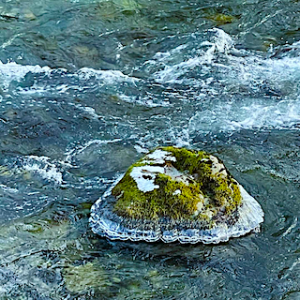 The Columbia City Yoga on-line Moving into Meditation class met this morning. We focused on concentration and what the mind needs to cultivate wholehearted concentration. When we bring our heart’s awareness to concentration we see that it is a devotional practice. We are moved to create the conditions in which concentration can naturally arise. What a relief to experience the ease of whole hearted concentration.
The Columbia City Yoga on-line Moving into Meditation class met this morning. We focused on concentration and what the mind needs to cultivate wholehearted concentration. When we bring our heart’s awareness to concentration we see that it is a devotional practice. We are moved to create the conditions in which concentration can naturally arise. What a relief to experience the ease of whole hearted concentration.
We continued to draw from Oren Jay Sofer’s new book: Your Heart Was Made for This: Contemplative Practices for Meeting a World in Crisis with Courage, Integrity, and Love. Oren describes concentration as a “collected and stable heart.” He believes concentration arises when the heart is interested and at ease.
We heard Professor Gloria Mark remark about creating pauses to rest the mind periodically throughout the day. I heard these remarks in her discussion with Ezra Klein, Tired? Distracted? Burned Out? Gloria is author of Attention Span A Groundbreaking Way to Restore Balance, Happiness and Productivity.
We heard from poet Jane Hirshfield’s essay The Mind of Concentration from her book Nine Gates: Entering the Mind of Poetry. In this essay Jane explores the many dimensions of concentration: “penetrating, unified, and focused, yet also permeable and open.”
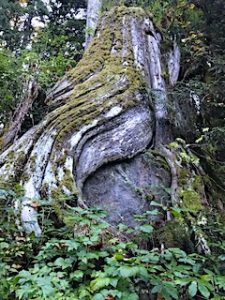 We heard Madronna Holden’s poem, Indwelling. I discovered the poem recently published by Kosmos Journal. Her site is an adventurous compilation of writings on world views and values, ecofeminism, folklore and poetry. Have a cup of tea here and be delighted!
We heard Madronna Holden’s poem, Indwelling. I discovered the poem recently published by Kosmos Journal. Her site is an adventurous compilation of writings on world views and values, ecofeminism, folklore and poetry. Have a cup of tea here and be delighted!
Finally we heard a brief quotation from chaplain and author Lynn Casteel Harper. You can read more of her views on remembering and inclusivity in the December Sun Magazine interview, Speak Memory: New Ways of Understanding Dementia.
Guided Reflection
 Last week we explored how we need each other to bring mindfulness into its mature expression as heartfulness. Today we’ll focus on concentration and on what the mind needs to concentrate. To concentrate is to remember. Aware of mind wandering we return awareness to the breath. In this process we allow ourselves to be “re-membered.”
Last week we explored how we need each other to bring mindfulness into its mature expression as heartfulness. Today we’ll focus on concentration and on what the mind needs to concentrate. To concentrate is to remember. Aware of mind wandering we return awareness to the breath. In this process we allow ourselves to be “re-membered.”
This week in meditation, concentrating on the breath, memories of sitting at my sister-friend Patti’s kitchen table, morphed into my grandma’s kitchen table with my Mom. Patti is still here. Grandma and Mom live in my heart. I had a felt sense of fully hearing them in my body. Then back to the breath. Remembering the breath. Breathing as re-membering closes the circle. The breath is bare, unadorned, vital and enough. To remember is to “re-member.” To re-member makes this fragmented self whole and all inclusive.
Oren Jay Sofer writes:
To live well, to be effective, focus, and connect deeply, we need concentration – a collected and stable heart. . . . Ordinary concentration depends on willpower, straining to subdue conflicting urges and shut out distractions. Such a state is . . . exhausting because we must sustain it by force. Meditation teaches us to cultivate a holistic concentration that emerges naturally and sustains itself.
This kind of natural concentration arises when the heart is interested and at ease. It has several expressions: momentary concentration, continuous concentration and deeper states of absorption. . . . In momentary and continuous concentration . . . you become deeply focused and aware, knowing what’s happening moment by moment.
What are the conditions in which the heart is interested and at ease? My heart is interested when I care. My heart is at ease when my body is at ease. There’s no sense of conflict. There is a sense of allowing.
Oren writes:
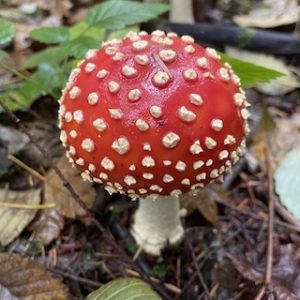 Concentration depends on clear intent, interest, relaxation and wholeheartedness. Clear intent means knowing our aim and simplifying our field of attention, setting aside everything else. When we’re clear about what we’re doing and interested in doing it our minds focus naturally.
Concentration depends on clear intent, interest, relaxation and wholeheartedness. Clear intent means knowing our aim and simplifying our field of attention, setting aside everything else. When we’re clear about what we’re doing and interested in doing it our minds focus naturally.
I also think concentration arises when the mind is well rested. It hasn’t been fatigued by too many stressful demands. Professor Gloria Mark, author of Attention Span, talks about the necessity of taking breaks. She describes the Japanese expression, yohaku no bi, which is the beauty of empty space. She recounts how she
. . . visited a beautiful garden in Kyoto. . . . a very famous beautiful rock garden. And what struck me that was not so much the rocks that were beautiful . . . but . . . also the space around the rocks. . . . yohaku no bi, is a metaphor for thinking intentionally about scheduling an empty space into your day, which could be exercise, could be contemplation, meditation.
How often do we plan for these precious pauses during our days? Time in which our minds can rest and regenerate. Time in which to cultivate attentional well-being. Perhaps these pauses can help us create the conditions in which our hearts can be interested and at ease. We prepare ourselves for the “holistic concentration that emerges naturally and sustains itself.”
I think this is also the mind of creativity. The kind of creativity that seems to spring from an embodied presence that is inter-related, inter-woven with the world. In her essay Poetry and the Mind of Concentration, Jane Hirshfield, writes:
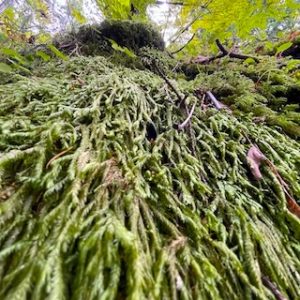 By concentration, I mean a particular state of awareness: penetrating, unified, and focused, yet also permeable and open. This quality of consciousness, though not easily put into words, is instantly recognizable. Aldous Huxley described it as the moment the doors of perception open; James Joyce called it epiphany. The experience of concentration may be quietly physical — a simple, unexpected sense of deep accord between yourself and everything. . . . In the wholeheartedness of concentration, world and self begin to cohere. With that state comes an enlarging: of what may be known, what may be felt, what may be done.
By concentration, I mean a particular state of awareness: penetrating, unified, and focused, yet also permeable and open. This quality of consciousness, though not easily put into words, is instantly recognizable. Aldous Huxley described it as the moment the doors of perception open; James Joyce called it epiphany. The experience of concentration may be quietly physical — a simple, unexpected sense of deep accord between yourself and everything. . . . In the wholeheartedness of concentration, world and self begin to cohere. With that state comes an enlarging: of what may be known, what may be felt, what may be done.
It seems in this wholehearted concentration we are part of all that is even as our attention deepens what we attend to. Here is the invitation of Madonna Holden’s poem, Indwelling:
Come closer.
This fire will all too soon
be ash.
I would tell you the story the moth knows
for making peace with the night.
The story tears have for making medicine
out of grief.
The story for eliciting the purr
in the belly of the tiger.
If you listen to your blood
you can hear the story of the sea
pulled by the moon
in the open sky
pouring the water of rivers
into your heart.
You can hear the aria
of the wind that the birds
know by heart
singing the story of your body
a hundred generations
in the making.
Come closer:
This is the story that will be yours
long after I have left this place.
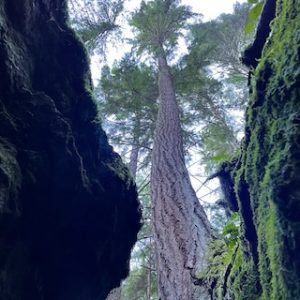 Let’s explore wholehearted concentration in mindfulness practice today. I invite you to adjust your position and stretch if you need to. You might take a few deep, slow breaths. Let your body settle and be welcomed: Here. Now. This moment. Come closer. Feel all of yourself arriving. You might travel awareness through the body. You can feel the points of contact your body share with Earth’s body. The softness of your face. As you visit these areas invite them into ease. The upper back, shoulders, arms and hands. The chest and belly. Pelvis, hips legs and feet.
Let’s explore wholehearted concentration in mindfulness practice today. I invite you to adjust your position and stretch if you need to. You might take a few deep, slow breaths. Let your body settle and be welcomed: Here. Now. This moment. Come closer. Feel all of yourself arriving. You might travel awareness through the body. You can feel the points of contact your body share with Earth’s body. The softness of your face. As you visit these areas invite them into ease. The upper back, shoulders, arms and hands. The chest and belly. Pelvis, hips legs and feet.
Come closer. Welcome each breath. I invite you to set a clear intention to focus on the breath. See if you can awaken interest in the breath. See if you can relax with the breath. Rest attention on the breath. Physical sensations of breathing. Find a place where the breath is easy. You breathing the breath. The breath breathing you.
As you begin to enter the breath more deeply, there may be a slow opening. There may be a soft sensitivity. A receptivity. See if you can receive each breath just as it is. Awareness just as it is. Aware of thoughts wandering, emotions surfacing. See if you can let the heart be interested and at ease. You might feel the energy of personality in attachments, aversions. We can offer personality compassion. It works so hard, defending and struggling. The teaching is to relax. Let it rest.
 As you re-member you can gather attention to the experience of breathing. Become one with the breath. Stay with it as concentration arises. A natural expression of mindfulness. This “particular state of awareness: penetrating, unified, and focused, yet also permeable and open.” See if you can let yourself rest more deeply into this experience emerging. Quietly physical. Simple. In deep accord with the world.
As you re-member you can gather attention to the experience of breathing. Become one with the breath. Stay with it as concentration arises. A natural expression of mindfulness. This “particular state of awareness: penetrating, unified, and focused, yet also permeable and open.” See if you can let yourself rest more deeply into this experience emerging. Quietly physical. Simple. In deep accord with the world.
As we come to close the practice I invite you to open awareness to the experience of being. Know that we can re-member. “In the wholeheartedness of concentration, world and self begin to cohere and we can remember others.” As chaplain and writer Lynn Casteel Harper reminds us:
Remembrance is the act of repairing the body to wholeness. So if people who live on the margins . . . if these people have been severed from the community, it’s our duty to remember them . . . because the body, our church, suffers when we don’t include them.
“May all beings be cared for and loved, . . . May all beings, receive and share the gifts of life, be given time to rest, be still, and experience silence.” May all beings, be free.
